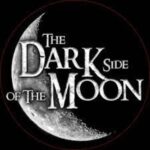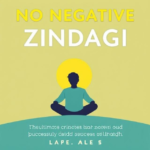The moon, with its ethereal beauty and enigmatic allure, has been a source of inspiration for humans since time immemorial. Its influence on cultures and mythologies worldwide has been profound, shaping our understanding of the universe and our place within it. In the modern age, as scientific achievements bring us closer to the moon, India’s Chandrayaan 3 mission not only carries the aspirations of a nation but also continues the age-old connection between the moon and mythology.
The Mythology of the Moon: A Universal Tapestry
Throughout history, the moon has been a central figure in myths and legends across cultures. In Hindu mythology, the moon is personified as Chandra, a deity who represents beauty, tranquility, and the ebb and flow of life’s cycles. The Greeks honored the moon through Artemis, the goddess of the hunt and the moon, while the Chinese revered Chang’e, who lives on the moon with her companion, the jade rabbit.
Chandrayaan 3: A Modern Odyssey
India’s space agency, ISRO (Indian Space Research Organization), launched its Chandrayaan mission with the objective of exploring the moon’s surface and deepening our scientific understanding. Chandrayaan 1, launched in 2008, made a groundbreaking discovery of water molecules on the moon’s surface. Chandrayaan 2, launched in 2019, aimed to study the moon’s south polar region and included an orbiter, lander, and rover.
Chandrayaan 3: Successful landing
Chandrayaan 3 represents India’s determination to continue its lunar exploration endeavors. Following the partial success of Chandrayaan 2—where the orbiter is operational, but the lander (Vikram) crash-landed—Chandrayaan 3 focuses on sending a lander and rover to the moon. With enhanced engineering and experience from previous missions, the Indian space agency aims to achieve a successful soft landing, which we did.
Chandrayaan 3 is landed successfull on the moon’s surface on August 23 at 6:04 p.m. Everybody all over the planet is expecting Chandrayaan 3’s prosperity. Subsequent to showing its capacity to arrive on the lunar surface securely, the Chandrayaan 3 mission will likewise perform significant undertakings, including surface meandering and examining subjective and quantitative natural investigations.
Mythology Meets Modernity
As Chandrayaan 3 embarks on its mission, the convergence of mythology and modernity is evident. The mission’s very name, “Chandrayaan,” encapsulates the centuries-old fascination with the moon. By exploring the moon’s mysteries, India pays homage to the mythological roots that connect humanity to this celestial body. Just as ancient stories sought to explain the moon’s influence on Earth, today’s missions seek to uncover scientific truths that can reshape our understanding of the cosmos.
Inspiration and Reflection
Chandrayaan 3 doesn’t merely signify technological advancement; it also serves as a symbol of human curiosity, resilience, and cooperation. As nations race to explore the moon, the spirit of exploration becomes a shared endeavor that transcends borders. Chandrayaan 3 inspires the world to come together in the pursuit of knowledge and the expansion of human capabilities.
Conclusion
The moon, a timeless symbol of wonder and mystery, continues to capture humanity’s imagination in the 21st century. Chandrayaan 3, with its ambitions of exploration and discovery, bridges the gap between ancient mythologies and modern scientific endeavors. As the spacecraft embarks on its journey, it echoes the aspirations of both the past and the future, reminding us that the connection between the moon and humanity’s collective narrative is as unbreakable as the bond between Earth and its celestial companion.






